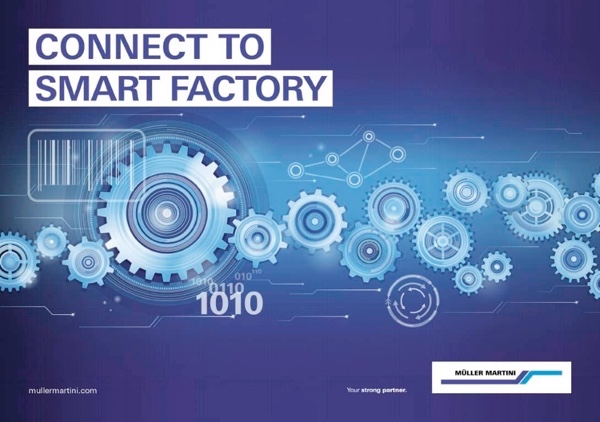Finishing & Screen Printing
Digital transformation – four steps to the smart factory

Wednesday 14. April 2021 - Anyone who wants to move from a previously conventionally managed business in the direction of digitization is faced with many unanswered questions. With a high level of consulting expertise, Muller Martini shows how the digital transformation can be achieved in four steps.
There is no out-of-the-box solution for a smart factory. Rather, it requires a workflow that is perfectly tailored to the individual operation in order to realize a digital transformation. Muller Martini not only has the products, business and workflow solutions for this process, but also supports customers with the experience gained from numerous projects already implemented. A four-step process is recommended, which first builds up an understanding of digitization, then clarifies the company’s needs, structures the process knowledge and finally designs the workflow for the Smart Factory.
In order to lead a company from the analog to the digital world, many aspects must be taken into account. The focus of digital transformation should always be on practical benefits.
Step 1: Understand digitization
In the long term, digital transformation changes the foundation of every company in terms of its strategy, structure, culture and processes. Whether new or existing equipment is used as a starting point is of secondary importance. Rather, it is a matter of optimally exploiting the existing possibilities in the company. This applies to technical measures, processes and personnel. It is important to understand that digital transformation is very far-reaching and affects many areas of a company.
Step 2: Clarify company needs
Many companies are afraid that they will have to change everything to digitize their processes. This fear is unfounded. Rather, it is crucial to recognize one’s own strengths and to be clear about how the company should develop. In taking this step, it is important to avoid idealistic approaches and only implement solutions that bring direct benefits.
Step 3: Structure process knowledge
Knowledge about the correct processes is often stored in the heads of employees. This knowledge must be structured and documented for successful digitization. This starts with a common vocabulary and a uniform understanding of terms. But it also concerns the common understanding of processes and their relevant variables. The timing and logistics of production in the existing production cells must also be defined. To reduce complexity, special attention must be paid to standard cases. Special cases should be excluded if possible.
Step 4: Shape digital transformation
The new target state is now defined on the basis of the principles developed. It is determined, for example, which individual information belongs in the electronic order pocket. The mapping of job structures and the printing of barcodes are also of central importance. For a successful digital transformation, it is necessary to consider and answer all the classic questions of a graphic production from the perspective of digital production.
Whitepaper Smart Factory
More in-depth information on the digital transformation and the four-step process towards the Smart Factory can be found in the Smart Factory white paper
